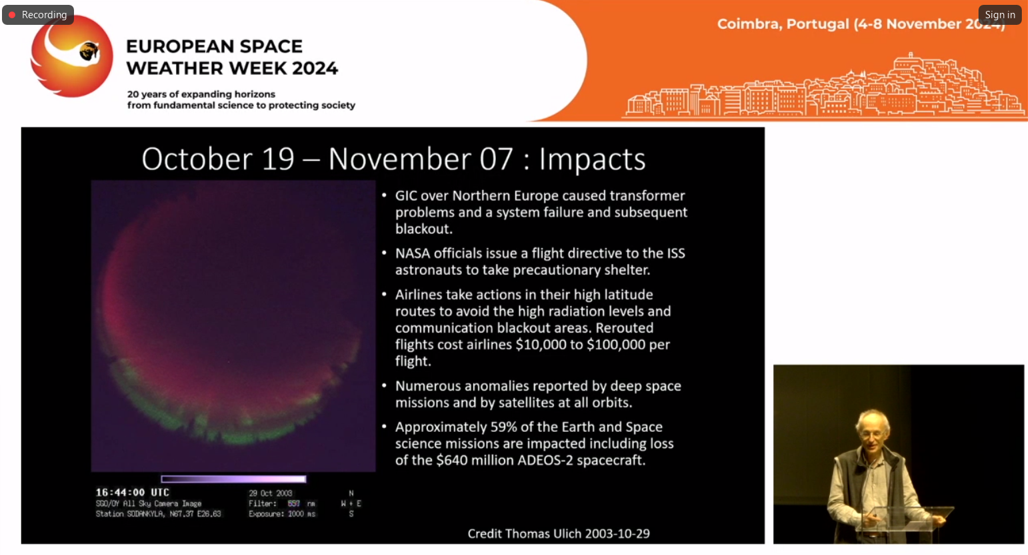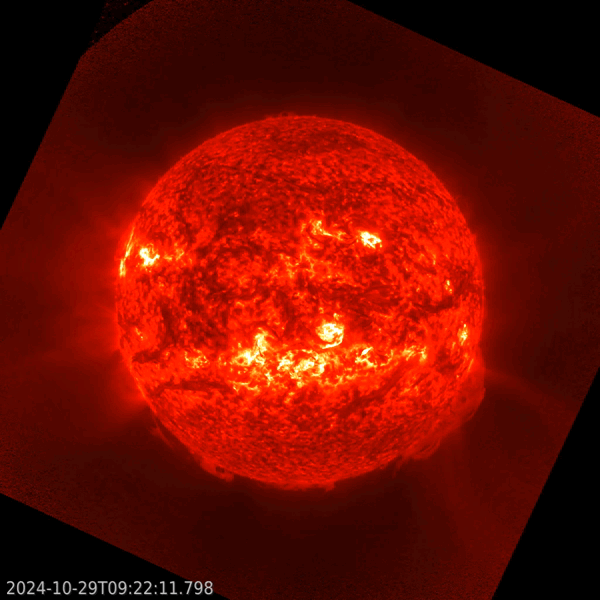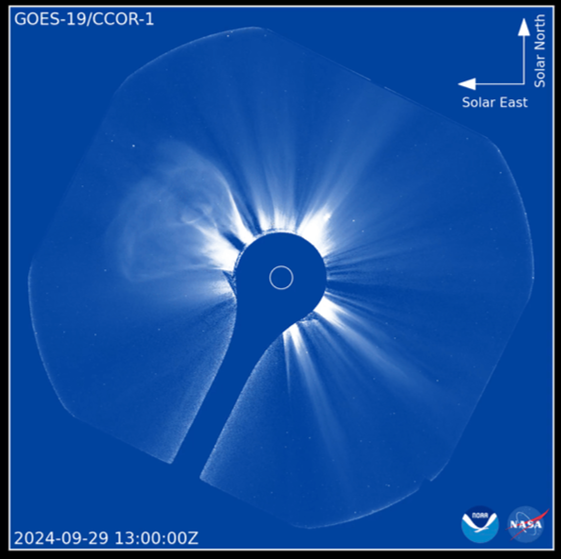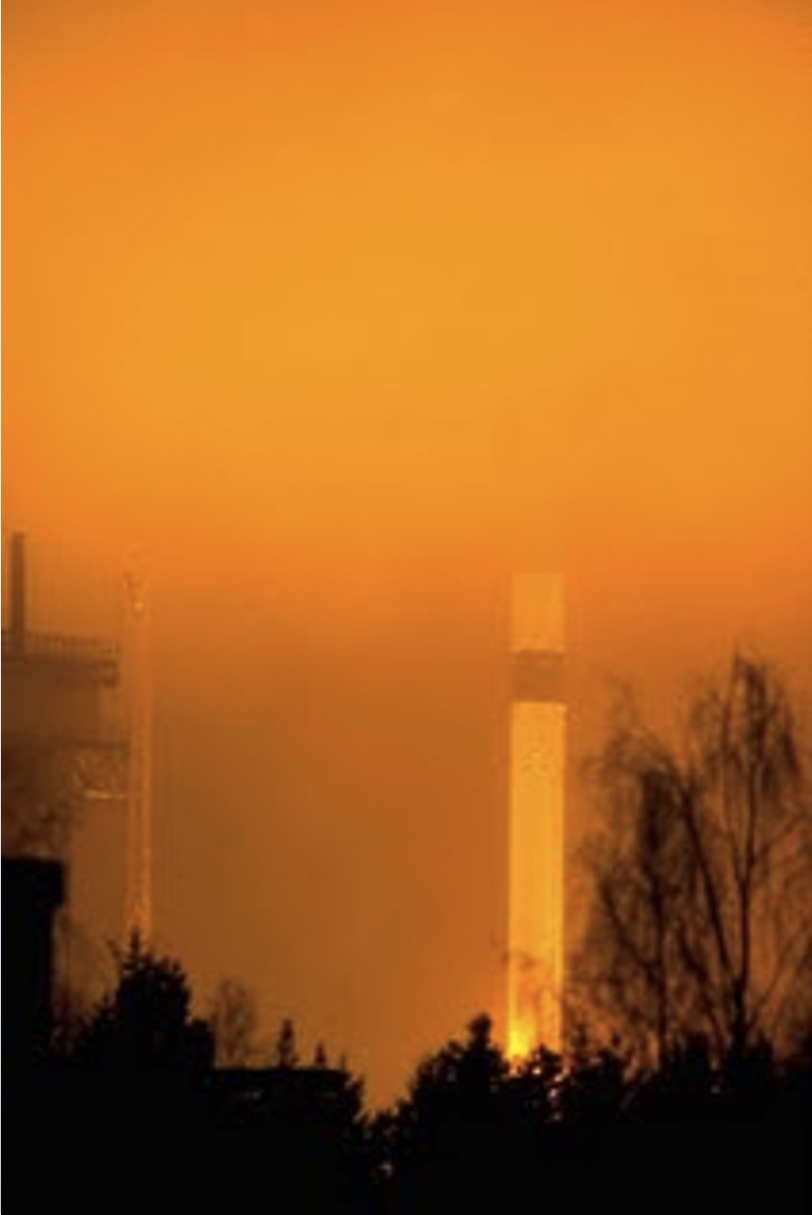This week (4-8 November), the European Space Weather Week is taking place. This is the 20th edition, taking place in Coimbra, Portugal. There are close to 700 registrations (online and onsite) ranging from scientists, service providers to end users, and from countries all over the world. Take a look at the website at https://esww2024.org/ The screenshot underneath shows Jean Lilensten during his keynote lecture on 20 years evolution of space weather and space climate.

One of the highlight's of last week's solar activity was the eruption of a large prominence from the southwest solar limb on 29 October. Amateur solar observers were able to follow the erupting prominence up to 500.000 km above the solar surface, that is 1.5 times the Earth-Moon distance. The clip underneath was made by GOES/SUVI 304 showing the Sun at temperatures around 80.000 degrees.

On 22 October, NOAA shared the first images from the Compact Coronagraph (CCOR-1), a powerful solar telescope onboard the new GOES-19 satellite. CCOR-1 began observing the Sun’s corona, the faint outermost layer of the solar atmosphere, on 19 September 2024. GOES-19 is currently undergoing post-launch testing and checkout of its instruments and systems, but expectations are it will be assigned the operational role as NOAA’s GOES East satellite in spring 2025. CCOR is the much-needed back-up and future replacement for the aging SOHO/LASCO coronagraphs, which will be 30 years old next year... The image underneath shows a coronal mass ejection on 29 September (upper left), with a movie and additional information available the NOAA website.

And last but not least, PROBA2 -ESA micro-satellite to which also Belgium contributed- celebrated its 15th anniversary last weekend. Indeed, PROBA2 was launched from the Russian launch base Plesetsk on 2 November 2009. On 14 December, there was the first light of the SWAP instrument (extreme ultraviolet camera)and LYRA (instrument to observe the intensity of solar flares) followed in January 2010. SWAP has a wide field of view and so is excellent to track large eruptions and coronal features. LYRA, aside being an excellent research tool, is e.g. also an excellent back-up for GOES soft x-ray measurements such as during eclipse season.






